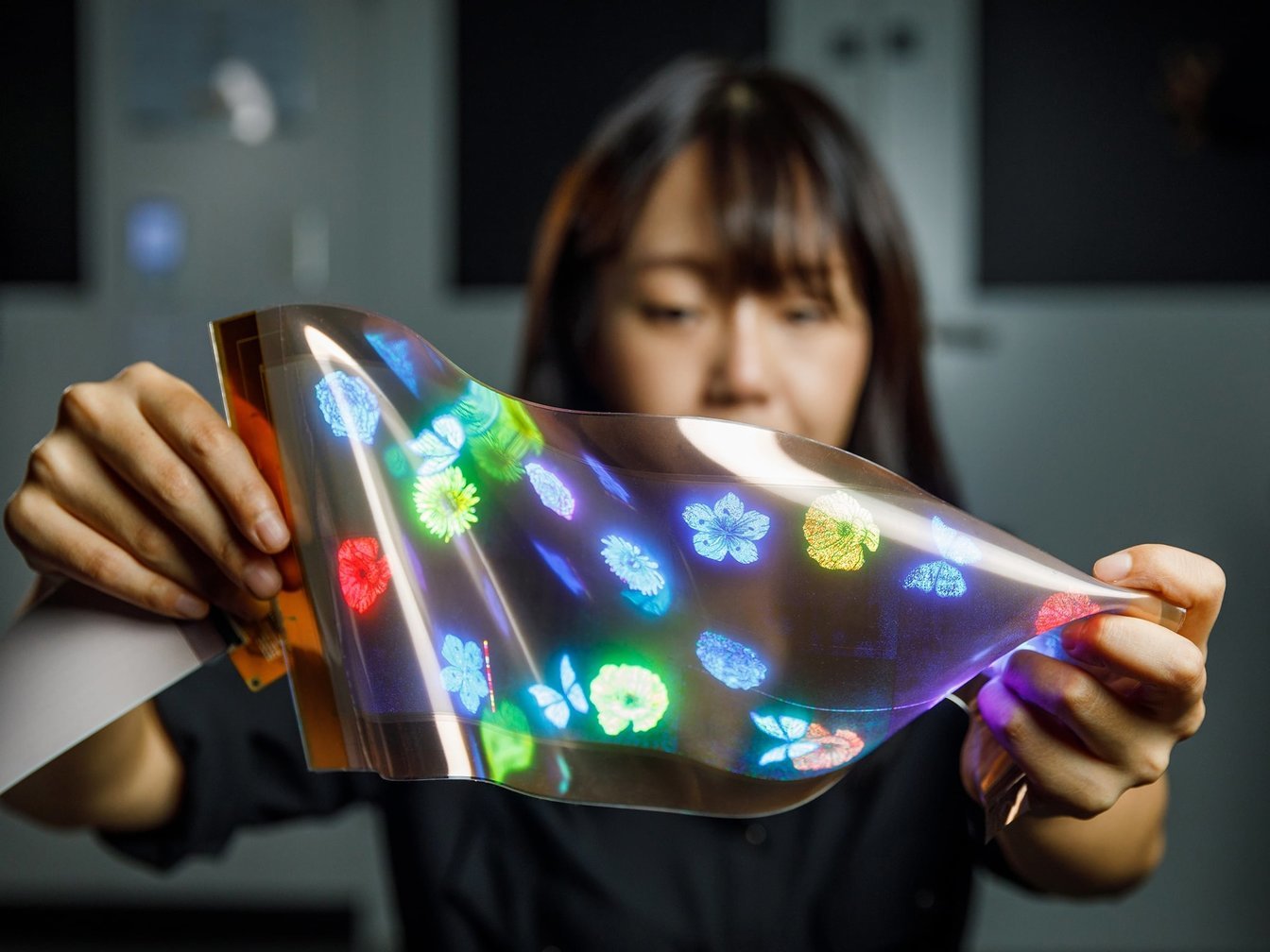LG Display, the panel-producing subsidiary of LG Electronics, has unveiled a bizarre and potentially groundbreaking new display that’s able to bend and contort itself in multiple ways.

The company showcased what it said is the world’s “first 12-inch high-resolution stretchable display”, adding that it’s capable of being deformed by up to 20% of its original size and shape, without sustaining any kind of damage.
What also piqued our interest is that it’s a MicroLED display, not OLED, where the company’s has focused most of its flexibility efforts thus far. The display can apparently be extended, twisted and folded in multiple directions, almost as if it’s a piece of fabric. And it does so while maintaining its 100ppi resolution and full-colour properties.
LG Display explained that it’s “thin, lightweight and easily attachable” to all kinds of curved surfaces, including human skin, clothing, furniture, aircraft and automobiles. What that means is it could have multiple applications in a range of industries, for instance in fashion, mobility, gaming and wearables.
The flexible material is created using what LG Display described as a “highly-resilient film-type substrate” that’s based on the same special silicon used to make contact lenses. It results in a “cutting edge solution” that far surpasses the capabilities of existing, OLED-based foldable and rollable displays.
There does seem to be merit to that claim, as even the best foldable smartphones are known for their fragility. They’re also a bit too bulky for many people’s liking, which limits their appeal for many people. Clearly then, LG Display is hoping that its prototype technology could pave the way for a more flexible handheld future that doesn’t sacrifice practicality.
It’s not only smartphones though, as the technology could theoretically be applied to much larger screens that could, perhaps, be emblazoned on trains, cars and airplanes, or on the curved outside wall of a football stadium. It could also lead to some interesting TV concepts.
We should note that LG Display isn’t the first to come up with a stretchable display concept. Way back in 2017, Samsung Display created an OLED-based stretchy display prototype, and that was followed by a somewhat impractical stretchable television last year. However, neither design appears to have proven viable for consumer products, at least not yet.
Whether or not LG Display’s stretchable MicroLED displays have a future remains to be seen. History shows that the display industry is full of innovations that never see the light of day.